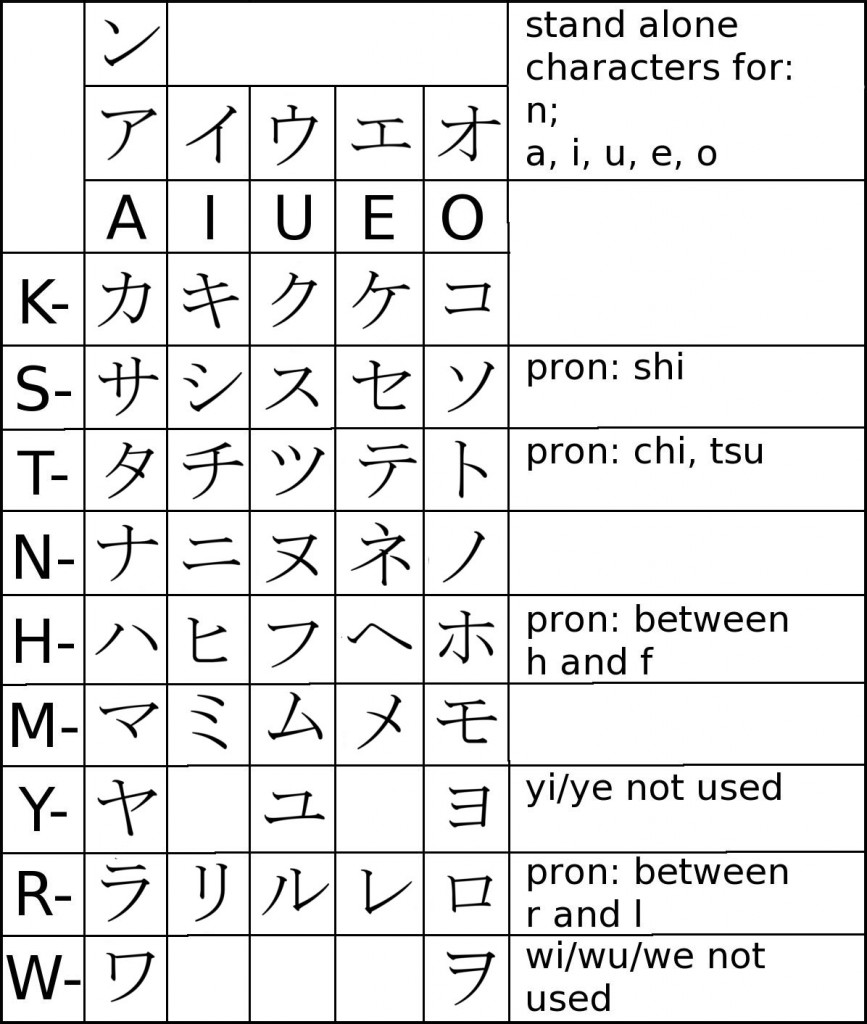Katakana is the other kana script used in Japanese besides Hiragana. Here is a full list of all the basic characters used in Katakana:

There are some special combinations of Katakana to aid reading foreign words, but as there is no standardized way of transcription, I’ll omit them here.
They use the same diacritic marks as Hiragana to produce the consonants g-, z-, d-, b-, and p-, and also the way of writing syllables like kyo, myo, etc. is the same as in Hiragana.
Katakana are primarily used for
- words taken from foreign languages, for example television or computer
- names of foreign countries or places
- names of foreigners
- technical and scientific terms
- words that have kanji that are difficult to read
- to indicate the on-yomi pronunciation of a Kanji in a dictionary
Katakana were developed around the same time as Hiragana, some even from the same kanji. While Hiragana were used for women’s writing, Katakana were developed as a shorthand and pronunciation aid by monks who were copying Chinese Buddhist texts.
Although the Katakana are essentially all straight lines, I find them surprisingly difficult to memorize. I have the feeling that they all look the same somehow. However, studying Katakana is probably the best way of being able to read anything in Japan as they (together with the Kanji) make up the majority of the writing that can be seen on the streets and in supermarkets.
